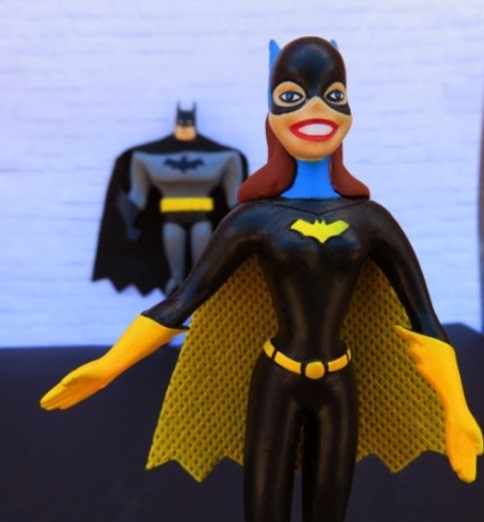
All teachers remember moments when they were caught off guard in front of a group of students. I remember a few years ago, in a class about male authors’ take on womanhood in nineteenth-century American literature, I commented on Henry James’s novella Daisy Miller, saying something along the lines of: “As a feminist, I object to some of the images James creates of women, why is he using those images? What do you think?” There were murmurs in the group, and I looked into skeptical faces: “Ms. Kindinger, are you a feminist?” I realized I had said something that changed my students’ image of me. I was confused. Had they never noticed my feminism from the way I teach and the texts I choose? Apparently not.
This year I chose to teach a class called “Feminism and Popular Culture,” responding to feminism’s (for simplicity’s sake, let’s assume it’s a unified movement) increasing visibility in the media, especially in popular culture and social media. I included texts, such as Buffy the Vampire Slayer, Bridesmaids, Tangerine, Master of None, writings by bell hooks, J. Jack Halberstam, and Roxane Gay as well as Sarai Walker’s wonderful novel, Dietland. In the very first session, my group filled out a brief questionnaire in which I asked whether they identified as feminists, what they knew about feminism, and who their feminist icons were. Only one of 30 students said they did not consider themselves a feminist. Everyone else claimed “feminism” as part of their identity, female and male students alike. I felt this was a very comfortable starting point for our discussions of second wave feminism as well as post- and third wave feminism.
I started off with one of my favorite definitions of feminism by Caitlin Moran. In How to Be a Woman (2011), she asks her readers to put down their hands in their pants: “a) Do you have a vagina? And b) Do you want to be in charge of it? If you said ‘yes’ to both, then congratulations! You’re a feminist.” Next, I showed them the definition Barbara Smith offered at the 1979 National Women’s Studies Association: “Feminism is the political theory and practice that struggles to free all women: women of color, working-class women, poor women, disabled women, Jewish women, lesbians, old women as well as – white economically privileged heterosexual women. Anything less than this vision of total freedom is not feminism, but merely female self-aggrandizement.” I had expectations, of course, expectations met when some students commented on the biological essentialism of Moran’s definition and both definitions’trans-exclusiveness. What I did not expect was both male and female students criticizing Moran and Smith for not including men. There it was. I was caught off guard and became very self-conscious: What do I think about men in feminism? What stance do I, as a feminist, take towards the male students who chose this class?
Of all the controversies I expected when discussing feminism – abortion; so-called trans-exclusive radical feminists; and sex-positive, even “sexy” feminism – I had not anticipated male feminism to be the toughest issue to grapple with. Naturally, I had included a session on male feminism; I asked my group to read Stephen Heath’s essay “Male Feminism” (1987) and watch the highly recommendable episode “Ladies & Gentlemen” from the Master of None TV series. However, this assignment took place much too late in the syllabus in one of the final weeks. Yet every week before, I looked at my male students and wondered what they thought when we spoke of feminism and patriarchy. What they, all white men, thought when I asked them to read from Sara Ahmed’s new book Living a Feminist Life in which she decides to not “cite any white men.” Yes, it would force them to check their male and white privilege; it would also make them understand that patriarchy is a system of oppression that has a variety of accomplices, both male and female.
Still, I had to check my own politics because every session I felt like I wanted to make my male students feel comfortable and appreciated while I assumed my female students were comfortable anyway. I had to force myself to make radical statements, to stand for the feminist politics I believe in, to argue for feminism as a space and movement in which women are the protagonists with men on the sidelines: related to feminism, dependent on feminism, but not the initiators, the doers. Why did I fear my male students would feel left behind? I have to admit it’s not because I strive to be a great teacher who manages to inspire and involve all her students. Rather, it has to do with me as a woman in a world that teaches us to value men more than women, to seek their approval, to make them feel good. Although my students did not expect this from me, I realized that I felt the urge to do so. After a few weeks in which we all got to know each other, I mentioned my struggle in front of everyone, asked my male students where they see themselves in feminism, and whether they felt the discomfort I assumed they did. Their answers were manifold; the feedback I received from the whole group was appreciation for admitting to having issues with my own feminism, of still struggling. Although I have always believed in opening up myself to my students to a certain extent, I’m sure that when one’s politics enter the classroom (as they should!), you cannot keep a distance, you need to jump in and accept even the most uncomfortable realizations about your own self. And then: admit, discuss, and change.
18,351 Total Views, 4 Views Today






